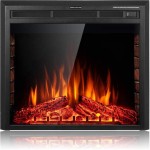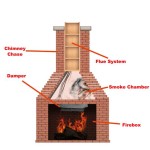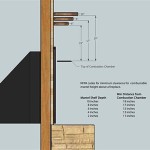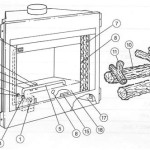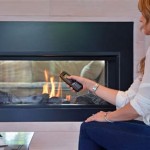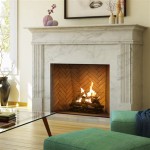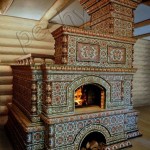Understanding Fireplace Damper Stops: Functionality and Importance
A fireplace serves both a functional and aesthetic purpose in a home. It provides warmth during colder months and adds a visual focal point to a living space. However, a fireplace also presents the potential for energy loss and safety concerns. A component often overlooked in the overall fireplace system is the damper stop. This relatively small piece plays a critical role in ensuring efficient fireplace operation and preventing unwanted drafts.
The fireplace damper is a movable plate located within the chimney flue. Its primary function is to seal off the chimney when the fireplace is not in use, preventing heat from escaping the house and keeping out drafts, rain, and debris. The damper stop limits how far the damper can close. While it might seem counterintuitive to prevent a complete seal, the small opening created by the damper stop is crucial for ensuring proper ventilation and preventing dangerous carbon monoxide buildup.
Preventing Carbon Monoxide Poisoning
One of the most significant dangers associated with a fireplace is the risk of carbon monoxide poisoning. Carbon monoxide (CO) is a colorless, odorless gas produced by the incomplete combustion of fuels such as wood, natural gas, or propane. When a fireplace damper is completely closed, it can prevent the proper venting of combustion byproducts, including CO, into the atmosphere. If the fireplace is used while the damper is fully closed, or significantly obstructed, CO can accumulate inside the home, posing a serious health hazard. The damper stop ensures that a small amount of airflow is always present, even when the damper is in the "closed" position. This minimal airflow allows for the gradual dissipation of any residual CO buildup, significantly reducing the risk of poisoning. This is especially important in homes that are tightly sealed for energy efficiency, as these homes have less natural ventilation.
It is critical to have working carbon monoxide detectors installed throughout the home, particularly near sleeping areas, regardless of whether a fireplace damper stop is present. CO detectors provide an additional layer of safety by alerting occupants to the presence of dangerous levels of the gas. Regular inspection and maintenance of these detectors are vital to ensure their proper functioning.
Ensuring Proper Ventilation
Beyond carbon monoxide mitigation, proper ventilation is necessary for the overall efficient operation of the fireplace. The damper stop contributes to this by maintaining a small amount of airflow within the chimney. This airflow helps to prevent condensation from forming within the chimney flue, which can lead to corrosion and deterioration of the chimney structure over time. Moisture buildup can also contribute to the growth of mold and mildew, potentially impacting indoor air quality. Furthermore, the slight opening provided by the damper stop helps to equalize pressure between the inside and outside of the home, preventing drafts and reducing the potential for backdrafting, which can force smoke and fumes back into the living space.
The degree of ventilation required depends on several factors, including the size of the fireplace, the height of the chimney, and the overall ventilation characteristics of the home. A qualified chimney professional can assess these factors and recommend the appropriate size and type of damper stop for a specific fireplace installation.
The Role of Airflow in Combustion
While seemingly insignificant, the small gap created by a damper stop can influence the combustion efficiency of the fireplace. Proper combustion requires sufficient oxygen. When the damper is completely closed, the available oxygen within the firebox is quickly depleted, leading to incomplete combustion. Incomplete combustion not only produces carbon monoxide but also results in the release of more soot and creosote into the chimney. Creosote is a highly flammable substance that accumulates on the inner walls of the chimney flue and poses a significant fire hazard. By allowing for a minimal amount of airflow, the damper stop helps to ensure that the fire receives an adequate supply of oxygen, promoting more complete combustion and reducing the buildup of creosote. This, in turn, reduces the risk of chimney fires and extends the lifespan of the chimney.
It should be noted that the presence of a damper stop does not eliminate the need for regular chimney cleaning and maintenance. A professional chimney sweep should inspect and clean the chimney annually to remove any accumulated creosote and ensure that the flue is free from obstructions. This is a crucial step in maintaining the safety and efficiency of the fireplace system.
In summary, the fireplace damper stop, though a small component, plays a pivotal role in fireplace safety, efficiency, and longevity. Its primary function is to ensure a minimum level of ventilation, preventing carbon monoxide buildup, reducing condensation, and promoting more complete combustion. While the damper stop contributes significantly to fireplace safety, it is essential to remember that it is only one part of a comprehensive system that includes functioning carbon monoxide detectors, regular chimney inspections, and proper fireplace operation techniques. Ignoring any of these aspects can compromise the safety and efficiency of the fireplace and potentially lead to hazardous conditions.
Furthermore, different types of damper stops exist, each designed for specific types of dampers and fireplaces. Some are adjustable, allowing for fine-tuning of the airflow, while others are fixed in size. Choosing the correct type of damper stop is crucial for optimal performance. Consulting with a qualified fireplace professional is advisable to ensure that the appropriate damper stop is selected and properly installed. This will help to maximize the benefits of the damper stop and ensure the safe and efficient operation of the fireplace for years to come.

Damper Stops Houston Tx Lords Chimney

How To Stop Fireplace Drafts Full Service Chimney

The Damper Clamp Im Home Inspections

What Is A Chimney Damper Full Service

Stanbroil Damper Clamp Stop For Fireplace Flue Outdoor

Types Of Diffe Chimney Dampers Severna Park Pasadena Md

Fireplace Dampers The Blog At Fireplacemall

Fireplace Damper Flue Clamp Stop Or Safety Lock New Bourlier S Barbecue And

Top Mount Dampers Victorian Fireplace

How To Stop Fireplace Drafts Full Service Chimney

